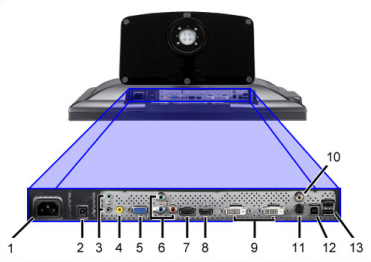Where will DisplayPort matter?
Unlike HDMI, which is exclusively designed to handle external connections, DisplayPort is also slated to replace LVDS (Low-voltage differential signaling, which is an electrical signaling system introduced in 1994 that has been widely used in computer busses) for internal connections inside notebooks and LCD TVs. Right now, LVDS is a real limitation: the number of wires required for high levels of bandwidth is very high (20 for 1600x1200 60Hz!) - this increases costs, interference with radios and also power consumption. DisplayPort wins in every conceivable way there.As for external connections (which are obviously much more visible to consumers), things aren't quite as clear-cut. Dual-link DVI and HDMI 1.3 only have slightly less bandwidth than DisplayPort. Compared to HDMI, DisplayPort also has a clear time-to-market disadvantage: LCD TVs based on the original HDMI standard have been on the market for years with wide adoption.
Furthermore, the DisplayPort 1.0 standard (which was ratified in mid-2006, roughly at the same time as HDMI 1.3) didn't really work out, mostly because of DisplayPort's original support for another DRM standard from HDCP, which the movie industry ultimately refused. DP 1.1 fixed that problem, but many months later. So now, DisplayPort has become a definitive no-go in the Consumer Electronics market. It looks like it'll be supported on a few niche products at best there.

Dell's upcoming 3008WFP monitor will be one of the first on the market with
DisplayPort support, although it also supports HDMI and DVI. [Source: The Inquirer]
In the PC market, on the other hand, OEMs have been pushing hard for DisplayPort 1.1. The reason is primarily cost: both HDMI and DVI force these companies to pay royalties. Not big ones, mind you; 15 cents if you don't want to showcase the logo on the product and/or promotional material, 5 cents if you're okay with that, and only 4 cents if you are also licensing HDCP. Still, that must have been a key factor in the OEM's backing for DisplayPort.
It wasn't the only one, though. There are other advantages to DisplayPort both in terms of cost and capabilities, but we'll get to that in a minute or so. However, it should be clear that DisplayPort is in excellent shape today, at least outside the Consumer Electronics industry.